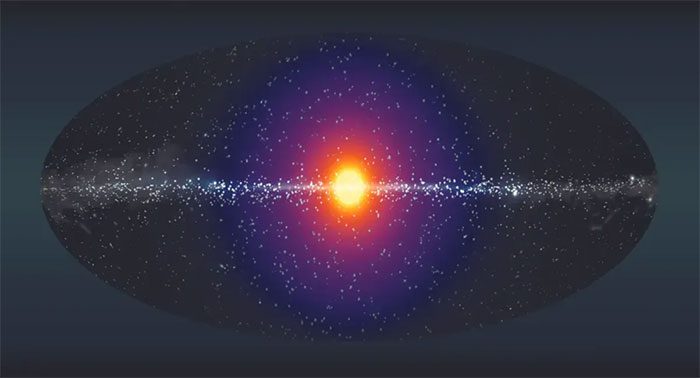A team of astronomers has for the first time measured the dark matter halos enveloping supermassive black holes, also known as the “hearts” located at the centers of ancient galaxies.
The “hearts” of ancient galaxies, which derive energy from supermassive black holes, often emit dazzling light that far exceeds the combined light from the stars in surrounding galaxies.

Simulation of dark matter halo surrounding a black hole. (Image: BERKELEY LAB).
These “hearts” typically glow whenever the supermassive black holes “devour” surrounding matter.
According to a recent report published in the journal The Astrophysical Journal, a team of scientists from the University of Tokyo (Japan) suggests that the dark matter halos surrounding ancient galaxies play a role in “pumping” material into supermassive black holes.
This indicates that the mechanism for providing energy to supermassive black holes has existed for a long time, based on research results from hundreds of galaxy subjects.
“For the first time, we have measured the standard weight of the dark matter halo enveloping a supermassive black hole located in a galaxy approximately 13 billion years ago,” said the team leader Nobunari Kashikawa, a professor at the University of Tokyo, as reported by Space.com.
The results indicate that the dark matter halo has a mass approximately 10 trillion times that of our Sun.
This new discovery is expected to have a significant impact on scientists’ efforts to understand how galaxies evolved during the early universe, as well as the overall evolution of the cosmos.
Could there be oceans and life on this planet?


















































